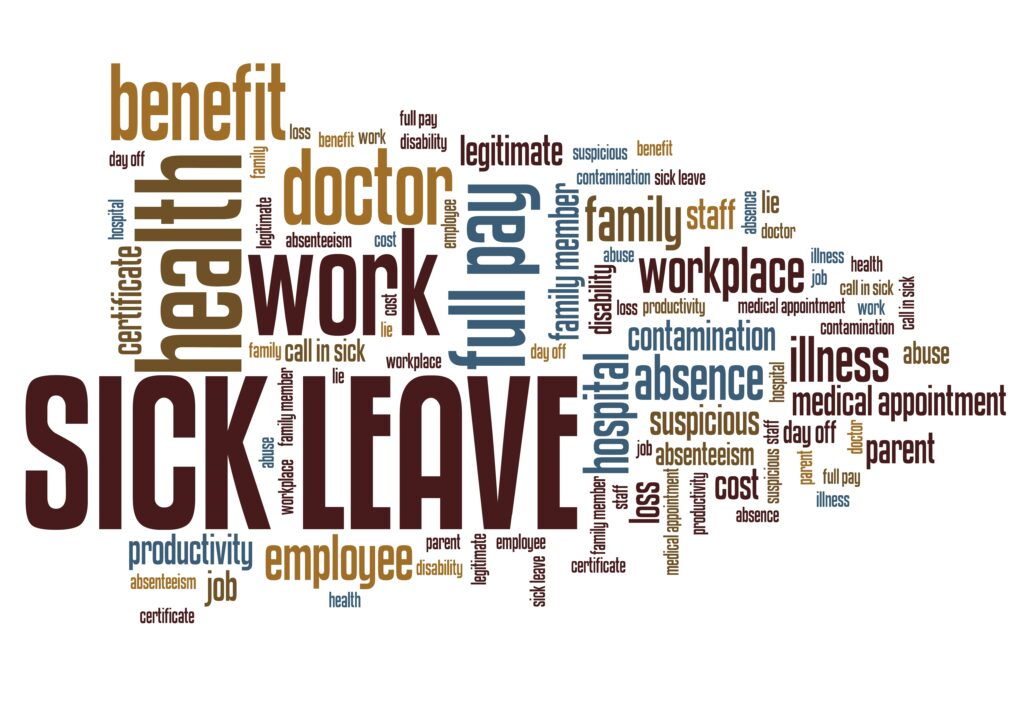Significant amendments to California’s Healthy Workplaces, Healthy Families Act of 2014, also known as the California Paid Sick Leave Law, went into effect immediately after Governor Jerry Brown signed AB 304 into law on July 13, 2015. Key provisions of the amendment affect calculation of the rate of pay, method of accrual of paid leave, and recordkeeping.
Rate of Pay Calculation
Non-exempt employees. Employers now have an option regarding how to pay sick days for non-exempt employees. The amendment requires an employer to calculate paid sick time for non-exempt employees using one of the following methods: (1) calculate the regular rate of pay for the workweek in which the employee uses paid sick time, whether or not the employee actually works overtime in that workweek; OR (2) divide the employee’s total wages, not including overtime premium pay, by the employee’s total hours worked in the full pay periods of the prior 90 days of employment.
Exempt employees. The amendment requires that paid sick time for exempt employees be calculated in the same manner as the employer calculates wages for other forms of paid leave time.
Importantly, the amendment eliminates the prerequisite that an employee earns commissions, piece rate, varying pay rates or be paid as a salaried nonexempt to trigger any special calculation method.
Alternative Accrual Methods
While employees may continue to accrue at the rate of not less than one hour for every 30 hours worked, the amendment now allows employers to use the following alternative methods of accrual:
- New Alternative Accrual Option. This is a welcome change for employers with paid time off policies. The amendment allows an employer to provide for sick leave accrual on a basis other than one hour for every 30 hours worked, provided that the accrual is on a regular basis and the employee will have 24 hours of accrued sick leave or paid time off by the 120th calendar day of employment of each calendar year, or in each 12-month period.
- Pre-January 1, 2015 Policies. The amendment permits an employer to use a prior paid sick leave or paid time off policy which applied to employees before January 1, 2015, using an accrual method different than providing one hour for every 30 hours worked, provided that the accrual is on a regular basis so that an employee, including an employee hired into that class after January 1, 2015, has:
- no less than one day or eight hours of accrued sick leave or paid time off within three months of employment of each calendar year, or each 12-month period; and
- the employee was eligible to earn at least three days or 24 hours of sick leave or paid time off within nine months of employment.
If an employer modifies the accrual method used in the policy in place prior to January 1, 2015, the employer shall comply with any accrual method set forth in Labor Code section 246(b) or provide the full amount of leave at the beginning of each year of employment, calendar year, or 12-month period. However, this newly added subsection does not prohibit an employer from increasing the accrual amount or rate for a class of employees covered by the subsection.
Front Load Method
An employer may still satisfy the accrual requirements of the law by providing not less than 24 hours or three days of paid sick leave. The amendment provides that the accrued time must be available to the employee to use by the completion of his or her 120th calendar day of employment.
Reinstatement of Prior Accrued Time
The amendment clarifies that an employer is not required to reinstate accrued paid time off to an employee who is rehired within one year of separation from employment and whose accrued time was paid out at termination, resignation, or separation.
Recordkeeping
Existing law requires an employer to keep records for three years, documenting the hours worked and paid sick days accrued and used by an employee and to make those records available to the labor commissioner upon request.
The Amendment provides that the employer has no obligation to inquire into or record the purposes for which an employee uses sick leave or paid time off.
Notice for Unlimited Sick Leave or Paid Time Off Policies
The Amendment permits an employer who provides unlimited sick leave or unlimited paid time off to its employees to satisfy the law’s notice requirements by indicating “unlimited” on the employee’s itemized wage statement or the separate writing provided on the designated pay date with the payment of wages.
Other Areas of Clarification
Eligibility. The Amendment clarifies that employees must perform 30 days of work within a year from the commencement of employment for the same employer to be eligible for paid sick leave.
Use. The Amendment permits an employer to limit an employee’s use of paid sick days to 24 hours or three days in each year of employment, a calendar year, or a 12-month period.
***It is important that employers review their policies and handbooks and examine how the Amendment affects the employer’s compliance with the paid sick leave act.
For more information, contact Jason Resnick at (949) 885-2253.
(Reprinted in part with permission of Jonathan Siegel, Esq., Jackson Lewis)


